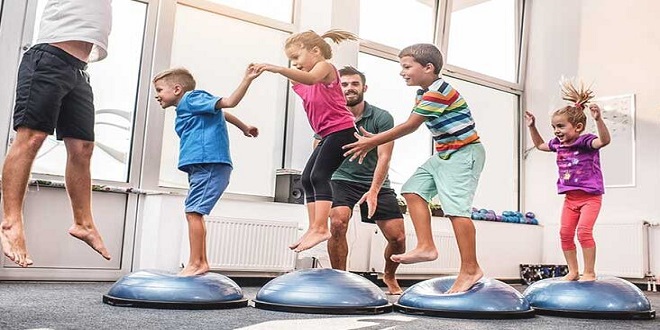Systems approach: multicomponent programs and interventions
Strategies for promoting behavioral change need to take account of the complex interactions between individuals and the settings in which they spend their time. While ecological models for health promotion encompass the individual, social, and policy levels, a systems approach focuses on the dynamic interactions among various factors at those levels.
\For example, a systems approach to increasing physical activity in children and adolescents can help address the complexity of this behavior within the school setting. Integrating students and key players such as school and administrative personnel with the school and classroom environments and all policy levels may be the best way to influence sustainable changes in population-level physical activity behaviors.
Programmatic /Policy Approaches and Their Outcome
This section reviews programmatic and policy approaches for increasing physical activity in the school setting and their outcomes. Examined in turn are physical education, recess, classroom physical activity, intra-, and extramural sports and after-school programs, active transport, the role of the environment in physical activity, and joint- or shared-use agreements.
Physical Education Status and Trends
No national data are available concerning population-level trends over time in enrollment and daily attendance in physical education, overall physical activity in physical education classes, or the amount of time spent in vigorous- or moderate-intensity physical exercise during physical education lessons among students in elementary and middle schools. However, research about children in elementary and middle schools documents insufficient physical education opportunities.
For example, one study of elementary schools across 10 U.S. localities found that the schools offered an average of two physical education lessons per week lasting 33 minutes each; children in this study received 25 minutes per week of vigorous- or moderate-intensity physical activity—far short of national recommendations—in physical education. And among middle and high school adolescents who participated in Wave I of the Adolescent Health Study in 1993, only 21.3 percent reported experiencing physical education on one or more days per week.
Impact on Physical Activity
Physical education programs and policies can shape the quantity and quality of physical activity among students across schools. Studies using direct observations of physical activity have found significant variations in the amount of vigorous- or moderate-intensity physical exercise students perform during their physical education classes: a range of 9-48 percent.
Several school-based intervention studies have targeted physical education classes to increase vigorous- or moderate-intensity physical activity in young children; many of these studies have included other intervention components, such as environmental changes. For example, in the CATCH intervention study involving children in elementary schools, the intensity of physical activity in physical education classes during the intervention was observed in the intervention schools compared with the control schools.
Impact on Other Outcomes
Fitness Physical fitness is a marker of successful interventions addressing physical activity (Dobbins et al., 2009). For example, in a physical education intervention study in middle schools, Dorgo and colleagues (2009) observed that the experimental groups improved significantly on the six fitness measures used and showed more significant improvements than the control group on most fitness measures at 9 and 18 weeks.
Conclusion
The body of evidence accumulated over the past two decades documents significant effects of school-based physical activity interventions on and associations of physical education policies with frequency and duration of physical activity, total activity, and levels of vigorous- or moderate-intensity physical activity among children and adolescents.
Evidence concerning the associations between school-based physical activity interventions and BMI, overweight, and obesity is less clear, and these associations merit further investigation. Nevertheless, evidence is generally consistent that school-based physical activity interventions positively influence fitness levels among students overall. However, there has been a lack of research on the influence of compliance with physical education policy on students’ physical fitness levels or whether this influence varies across race-ethnicity, gender, socioeconomic status, and locations.
Teluguwap is a well-known online platform that provides users with the latest Telugu music and movie downloads. With a diverse selection of content available, users can easily access their favorite music and films. Whether you are a fan of traditional Telugu songs or contemporary blockbuster movies, Teluguwap has something for everyone.
The website’s user-friendly interface and fast download speeds make it a convenient choice for entertainment enthusiasts. Stay tuned to discover the latest releases and enjoy seamless downloads at
Teluguwap.


